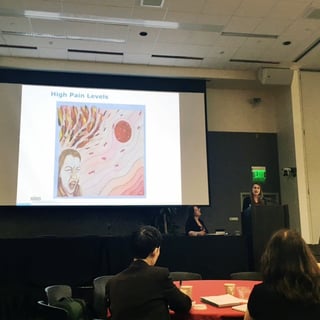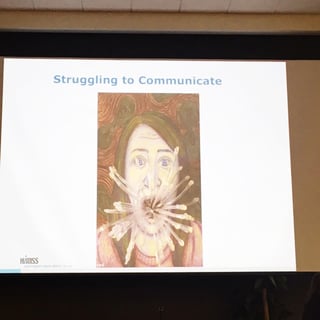I recently had the privilege of attending the HIMSS Northern California Chapter fourth annual Patient Engagement Summit. Over the past few years, patients have become increasingly engaged in their medical treatment, which is driving our healthcare market to become more consumer-driven. This has resulted in the development of patient-centered software, more accurate patient-generated health data (PGHD), better relationships between patients and their providers, and improved patient health. One of the conference sessions walked through the journey of a patient, who with the help of her caregiver, took patient engagement to a whole new level.
Managing Chronic Illness 
Kate Sheridan suffered severely from Lyme disease for many years. After numerous ED visits, doctors appointments, treatments, and medications that didn’t seem to resolve her symptoms, she and her family decided to take Kate’s care into their own hands. They collected all Kate’s medical records from each doctor and institution they'd ever visited and created their own tracking spreadsheet. They tracked Kate's 26 symptoms along with her pain scores, mood rankings, and medication administration to more accurately share her "full patient story," rather than her story from that day, with her care team during each visit.
From Personal Project to Patient-Centered Solution
Kate’s mom, Kristina Sheridan, turned their personal project into a research project for the company where Kristina now works, MITRE Corporation. The research project became a patient-friendly platform called the Patient Toolkit. It helps patients input and track their health data and manage their days more effectively. They can track their medications, note when they took them, and record how certain medication impacted their symptoms. It isn’t fully integrated with EHRs yet, but it gives patients and their caregivers a way to more comprehensively track what's happening day-to-day. It maps symptoms back to SNOMED and medications back to RxNorm. It allows patients to pick from a list of symptoms rather than having to recall them off the top of their heads. It serves as an EHR, if you will, for patients, by patients.
To assist MITRE in developing Patient Toolkit, they collaborated with the University of Virginia on a clinical study with MS patients, which proved the data could be trusted. The study found patients are receptive to tracking their symptom severity data between appointments, want to use mobile devices to collect the information, and can reliably collect valid data outside the clinical setting between appointments.
Kate’s closing comments about how a patient-centered solution helped improve her health were powerful. She talked about how she’s not just a set of vital signs, a diagnosis, or a chronic patient; but rather, an artist, a musician, an athlete, and a daughter.
Key Takeaways
- It’s important for chronically ill patients and their caregivers to be able to use a patient-centered solution to track symptoms, medicines, equipment, etc.
- A team-based care approach (patient, caregivers, doctors, behavior health specialists, etc.) with stream-lined communication will have a positive impact on patient care.
- The doctor-patient relationship can be improved by using a patient-centered solution and ensures that patients and their caregivers can help make treatment decisions.
- Using a patient-centered system and integrating PGHD into the EHR can enhance population health management.
Current Challenges in this Space
- Policies don't support the use of these patient tools.
- In the current pay-for-performance model, there are no relative value units (RVUs) for the data, meaning it's not tied to reimbursement of any sort at this time.
- Clinical quality measures don't support patient data other than patient satisfaction, which would be as limited as "did the patient show up for an appointment?"
Kate shared pictures of her journey and her artwork during her presentation which you can see more of here.


If you’d like to learn more about patient engagement, click the button below for blog posts, videos, and podcasts or contact us. We'd be happy to chat.






